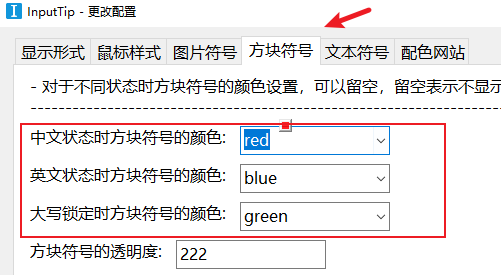1. list的介绍
list的文档介绍

2. list的使用
list中的接口比较多,此处类似,只需要掌握如何正确的使用,然后再去深入研究背后的原理,已 达到可扩展的能力。以下为list中一些常见的重要接口。
2.1 list的构造

// list的构造
void TestList1()
{list<int> l1; // 构造空的l1list<int> l2(4, 100); // l2中放4个值为100的元素list<int> l3(l2.begin(), l2.end()); // 用l2的[begin(), end())左闭右开的区间构造l3list<int> l4(l3); // 用l3拷贝构造l4// 以数组为迭代器区间构造l5int array[] = { 16,2,77,29 };list<int> l5(array, array + sizeof(array) / sizeof(int));// 列表格式初始化C++11list<int> l6{ 1,2,3,4,5 };// 用迭代器方式打印l5中的元素list<int>::iterator it = l5.begin();while (it != l5.end()){cout << *it << " ";++it;}cout << endl;// C++11范围for的方式遍历for (auto& e : l5)cout << e << " ";cout << endl;
}![]()
2.2 list iterator的使用
此处,大家可暂时将迭代器理解成一个指针,该指针指向list中的某个节点。

// list迭代器的使用
// 注意:遍历链表只能用迭代器和范围for
void PrintList(const list<int>& l)
{// 注意这里调用的是list的 begin() const,返回list的const_iterator对象for (list<int>::const_iterator it = l.begin(); it != l.end(); ++it){cout << *it << " ";// *it = 10; 编译不通过}cout << endl;
}void TestList2()
{int array[] = { 1, 2, 3, 4, 5, 6, 7, 8, 9, 0 };list<int> l(array, array + sizeof(array) / sizeof(array[0]));// 使用正向迭代器正向list中的元素// list<int>::iterator it = l.begin(); // C++98中语法auto it = l.begin(); // C++11之后推荐写法while (it != l.end()){cout << *it << " ";++it;}cout << endl;// 使用反向迭代器逆向打印list中的元素// list<int>::reverse_iterator rit = l.rbegin();auto rit = l.rbegin();while (rit != l.rend()){cout << *rit << " ";++rit;}cout << endl;PrintList(l);
}
【注意】
1. begin与end为正向迭代器,对迭代器执行++操作,迭代器向后移动
2. rbegin(end)与rend(begin)为反向迭代器,对迭代器执行++操作,迭代器向前移动
2.3 list capacity

2.4 list element access

2.5 list modifiers

// list插入和删除
// push_back/pop_back/push_front/pop_front
void TestList3()
{int array[] = { 1, 2, 3 };list<int> L(array, array + sizeof(array) / sizeof(array[0]));PrintList(L);// 在list的尾部插入4,头部插入0L.push_back(4);L.push_front(0);PrintList(L);// 删除list尾部节点和头部节点L.pop_back();L.pop_front();PrintList(L);
}// insert /erase
void TestList4()
{int array1[] = { 1, 2, 3 };list<int> L(array1, array1 + sizeof(array1) / sizeof(array1[0]));// 获取链表中第二个节点auto pos = ++L.begin();cout << *pos << endl;// 在pos前插入值为4的元素L.insert(pos, 4);PrintList(L);// 在pos前插入5个值为5的元素L.insert(pos, 5, 5);PrintList(L);// 在pos前插入[v.begin(), v.end)区间中的元素vector<int> v{ 7, 8, 9 };L.insert(pos, v.begin(), v.end());PrintList(L);// 删除pos位置上的元素L.erase(pos);PrintList(L);// 删除list中[begin, end)区间中的元素,即删除list中的所有元素L.erase(L.begin(), L.end());PrintList(L);
}// resize/swap/clear
void TestList5()
{// 用数组来构造listint array1[] = { 1, 2, 3 };list<int> l1(array1, array1 + sizeof(array1) / sizeof(array1[0]));PrintList(l1);// 交换l1和l2中的元素list<int> l2;l1.swap(l2);PrintList(l1);PrintList(l2);// 将l2中的元素清空l2.clear();cout << l2.size() << endl;
}
list中还有一些操作,需要用到时大家可参阅list的文档说明。
3.list的迭代器失效
前面说过,此处大家可将迭代器暂时理解成类似于指针,迭代器失效即迭代器所指向的节点的无 效,即该节点被删除了。因为list的底层结构为带头结点的双向循环链表,因此在list中进行插入时是不会导致list的迭代器失效的,只有在删除时才会失效,并且失效的只是指向被删除节点的迭代器,其他迭代器不会受到影响。
void TestListIterator1()
{
int array[] = { 1, 2, 3, 4, 5, 6, 7, 8, 9, 0 };
list<int> l(array, array + sizeof(array) / sizeof(array[0]));
auto it = l.begin();
while (it != l.end())
{
// erase()函数执行后,it所指向的节点已被删除,因此it无效,在下一次使用it时,必须先给
其赋值
l.erase(it);
++it;
}
}
// 改正
void TestListIterator()
{
int array[] = { 1, 2, 3, 4, 5, 6, 7, 8, 9, 0 };
list<int> l(array, array + sizeof(array) / sizeof(array[0]));
auto it = l.begin();
while (it != l.end())
{
l.erase(it++); // it = l.erase(it);
}
}
3.list的模拟实现
#pragma once
#include <iostream>
#include <assert.h>
#include <vector>
#include<list>
using namespace std;namespace xc
{template<class T>struct list_node{T _data;list_node<T>* _next;list_node<T>* _prev;list_node(const T& data = T()): _data(data), _next(nullptr), _prev(nullptr){}};//const_iteratortemplate <class T, class Ref, class Ptr>struct list_iterator{typedef list_node<T> Node;typedef list_iterator< T, Ref,Ptr>Self;Node* _node;list_iterator(Node* node): _node(node){}Ref& operator*(){return _node->_data;}Ptr operator->(){return &_node->_data;}Self& operator++(){_node = _node->_next;return *this;}Self& operator--(){_node = _node->_prev;return *this;}bool operator != (const Self& s) const{return _node != s._node;}bool operator==(const Self& s)const{return _node == s.node;}};template <class T>class list{typedef list_node<T> Node;public:typedef list_iterator<T, T&, T*>iterator;typedef list_iterator<T, const T&, const T*>const_iterator;iterator begin(){/* iterator it(_head->_next);return it;return iterator(_head->_next);*/return _head->_next;}iterator end(){return _head;}const_iterator begin()const{/* iterator it(_head->_next);return it;return iterator(_head->_next);*/return _head->_next;}const_iterator end()const{return _head;}void empty_init(){_head = new Node;_head->_next = _head;_head->_prev = _head;_size = 0;}list(){empty_init();}list(initializer_list <T> lt){empty_init();for (auto& e : lt){push_back(e);}}//lt2(lt1)list(const list<T>& lt){empty_init();for (auto& e : lt){push_back(e);}}//lt1 = lt3list<T>& operator= (list<T> lt){swap(lt);return *this;}~list(){clear();delete _head;_head = nullptr;}void clear(){auto it = begin();while (it != end()){it = erase(it);}}void swap(list<T>& lt){std::swap(_head, lt._head);std::swap(_size, lt._size);}void push_back(const T& x){/* Node* newnode = new Node(x);Node* tail = _head->prev;tail->_next = newnode;newnode->_prev = tail;nwnode->_next = _head;_head->_prev = nownode;++size;*/insert(end(), x);}void insert(iterator pos, const T& x){Node* cur = pos._node;Node* prev = cur->_prev;Node* newnode = new Node(x);//prev newnode curnewnode->_next = cur;cur->_prev = newnode;newnode->_prev = prev;prev->_next = newnode;++_size;}void push_front(const T& x){insert(begin(), x);}void pop_back(){erase(--end());}void pop_front(){erase(begin());}iterator erase(iterator pos){assert(pos != end());Node* prev = pos._node->_prev;Node* next = pos._node->_next;prev->_next = next;next->_prev = prev;delete pos._node;--_size;return next;}size_t size() const{return _size;}bool empty()const{return _size == 0;}private:Node* _head;size_t _size;};struct AA{int _a1 = 1;int _a2 = 1;};// 按需实例化// T* const ptr1// const T* ptr2template<class Container>void print_container(const Container& con){// const iterator -> 迭代器本身不能修改// const_iterator -> 指向内容不能修改typename Container::const_iterator it = con.begin();//auto it = con.end();while (it != con.end()){cout << *it << " ";++it;}cout << endl;for (auto e : con){cout << e << " ";}cout << endl;}void test_list1(){list<int> lt;lt.push_back(1);lt.push_back(2);lt.push_back(3);lt.push_back(4);print_container(lt);list<int>::iterator it = lt.begin();while (it != lt.end()){cout << *it << " ";++it;}cout << endl;for(auto e: lt){cout << e << " ";}cout << endl;list<AA> lta;lta.push_back(AA());lta.push_back(AA());lta.push_back(AA());lta.push_back(AA());list<AA>::iterator ita = lta.begin();while (ita != lta.end()){//cout << (*ita)._a1 << (*ita)._a2 << endl;// 特殊处理,本来应该是两个->才合理,为了可读性,省略了一个->cout << ita->_a1 << ":" << ita->_a2 << endl;//cout << ita.operator->()->_a1 << ita.operator->()->_a2 << endl;++ita;}cout << endl;}void test_list2(){list<int> lt;lt.push_back(1);lt.push_back(2);lt.push_back(3);lt.push_back(4);//insert以后迭代器不失效list<int>::iterator it = lt.begin();lt.insert(it, 10);*it += 100;print_container(lt);//erase以后迭代器失效//删除所有的偶数it = lt.begin();while (it != lt.end()){if (*it % 2 == 0){it = lt.erase(it);}else{++it;}}print_container(lt);}void test_list3(){list<int>lt1;lt1.push_back(1);lt1.push_back(2);lt1.push_back(3);lt1.push_back(4);list<int> lt2(lt1);print_container(lt2);list<int> lt3;lt3.push_back(10);lt3.push_back(20);lt3.push_back(30);lt3.push_back(40);lt1 = lt3;print_container(lt1);print_container(lt3);}void func(const list<int>& lt){print_container(lt);}void test_list4(){//直接构造list<int> lt0({ 1,2,3,4,5,6 });//隐饰类型转换list<int>lt1 = { 1,2,3,4,5,6,7,8 };func(lt0);func({ 1,2,3,4,5,6 });//隐饰类型转换}
}4.list与vector的对比

补充:






